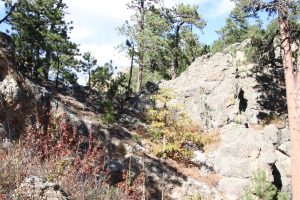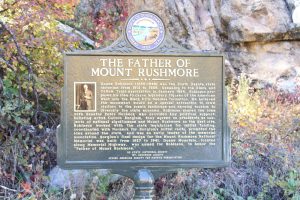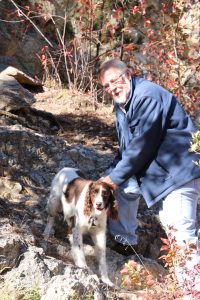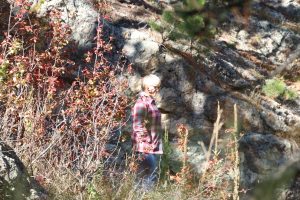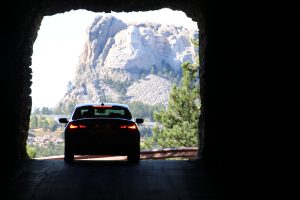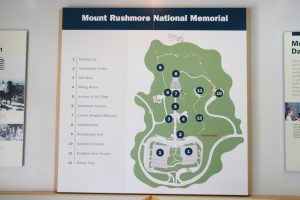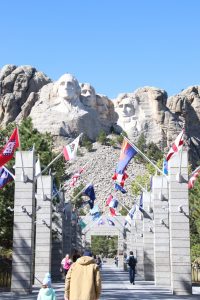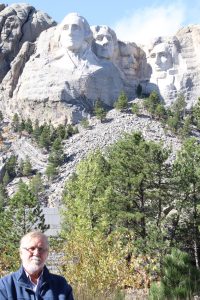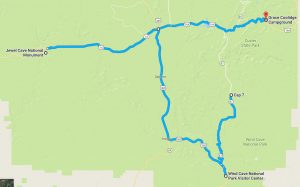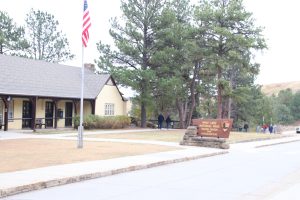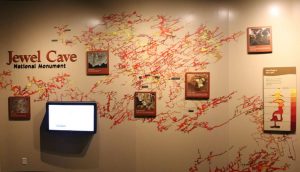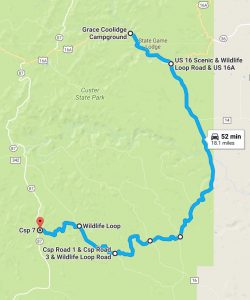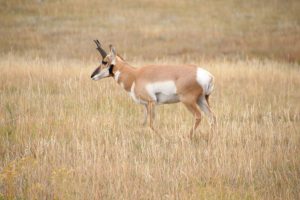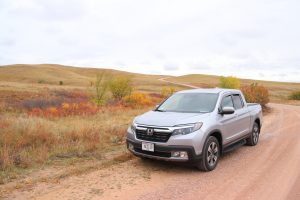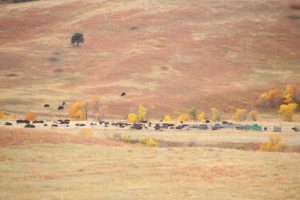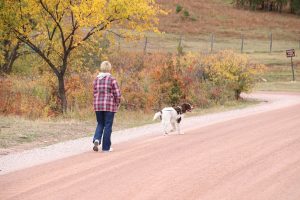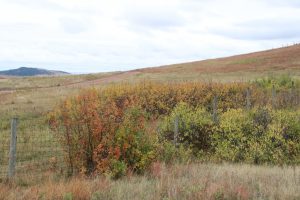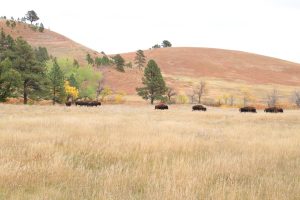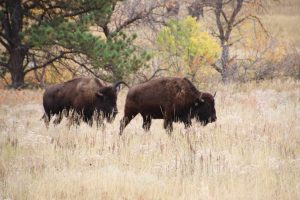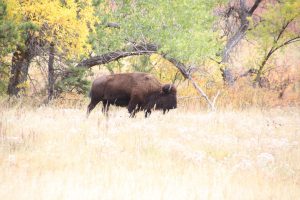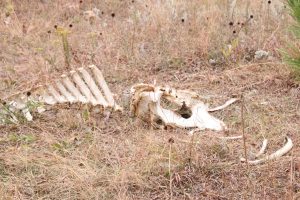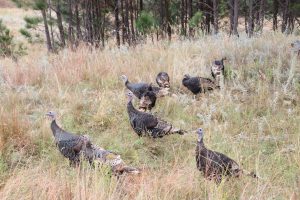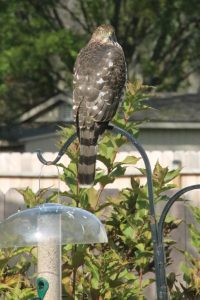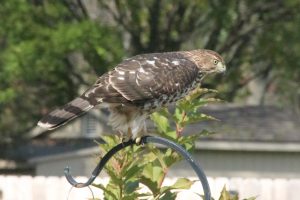We started our morning with a visit to the Custer State Park Visitor Center, just a few miles down the road from our camp site. The visit was worth the stop. They had a great movie about the park (narrated by Kevin Costner) that provided a good background on the history and development of the park. There was also a small area with interactive displays about native wildlife (mostly buffalo) and early exploration. Before leaving, we looked over a large 3D topographical map of the park and immediate vicinity.
We knew that we were going to drive both Needles Highway and Iron Mountain Road – both headed generally north towards Mount Rushmore, one to the west side of the park, the other to the east side of the park. The problem was that to expedite our day, we needed to take one out and the other back when both we designed to showcase scenery going out of the park. With no particular rationale, we opted to go to Mt Rushmore on Needles Highway (State 87) and then return to the park on Iron Mountain Road (US 16A).
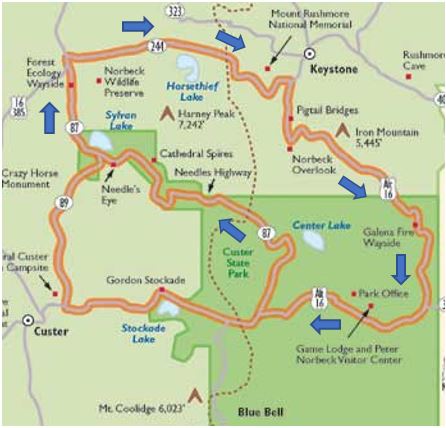
Needles Highway, Iron Mountain Road and the Wildlife Loop together form the Peter Norbeck Scenic Byway, named to honor the former South Dakota Governor (1917-1921) and US Senator (1921-1936). He was critical in founding Custer State Park, initiating the concept for Mount Rushmore, and laying out the routes for the roads to bring tourists to the sites he founded.
Needles Highway was initially deemed impossible to construct, but Norbeck persisted, coaxing road engineers to get creative and ultimately create a road through the Black Hills that effectively followed horse trails, fourteen miles of narrow roadway, sharp curves, narrow tunnels that necessarily have to be driven slowly so everyone traveling has a chance to experience and enjoy the ruggedness of the Black Hills. The road was completed in 1922 and hasn’t changed much since the day it first opened.
Shortly after we made the turn onto 87, we found a buffalo grazing just off the road.
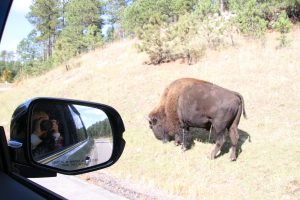
The road was relatively wide with smooth, easy curves early on. About 5 miles into the ride, though, it started getting a bit more rugged, with granite outcroppings alongside the road. Around one of the turns, we found a small parking turnoff called “Hole In The Wall” picnic area. We pulled off the road to get a few pictures and give Tyler a chance to exercise. He wasn’t too interested in exploring the small cave, but he did enjoy following the short path alongside the granite wall.
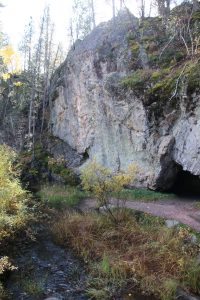
Just after the stop at the picnic area the road started getting more curvy and narrow as the rock outcroppings got larger. In short order, we were climbing and started catching sight of the granite “needles” that gave name to the highway. Along the route, we rounded a curve to see a mountain goat grazing by the side of the road.
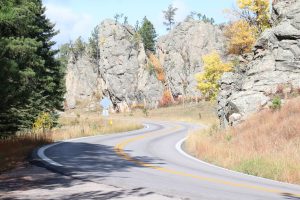
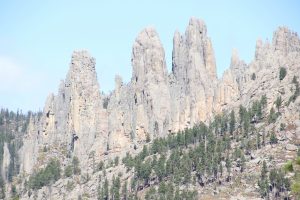
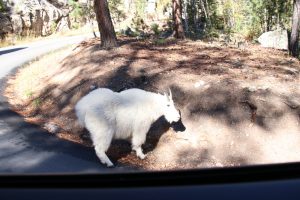
As we reached to highest point on the road (about 6400 feet), we found some fantastic views that helped us get perspective of the Black Hills as a large, tall, rocky island in the middle of the high plains.
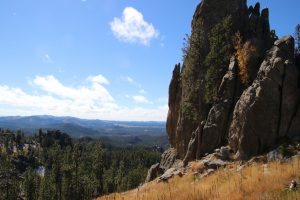
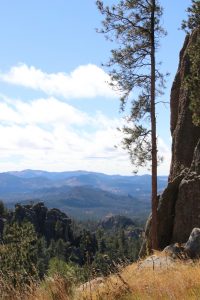
The road traveled along a ridge that cut through the needles, including some narrow tunnels along the way that the road is famous for. We also passed through some woods at the high elevation that had some snow accumulation from the precipitation the night before. Having camped down in the park, we knew well enough that it had rained all night. Apparently, the only thing that separated us from snow was the 1500 feet in elevation that we climbed along the highway.
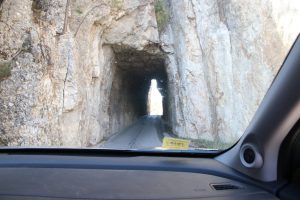
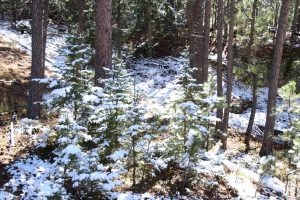
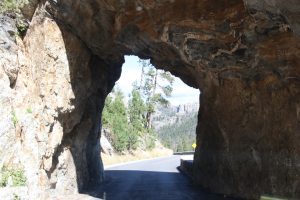
As we left the park, we passed the peaceful Sylvan Lake Lodge and the road opened to a wider two lane highway that would carry us to Mount Rushmore.
